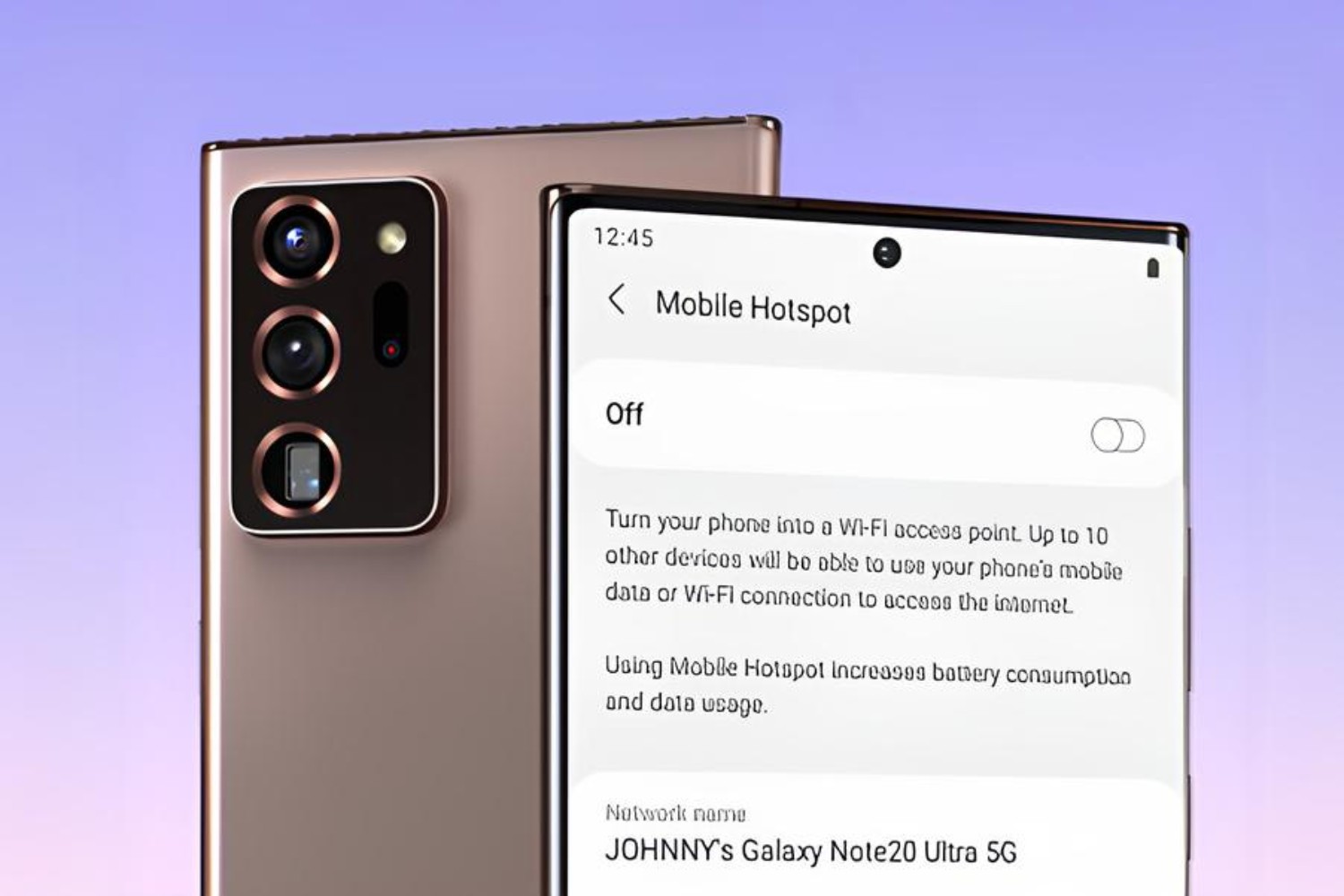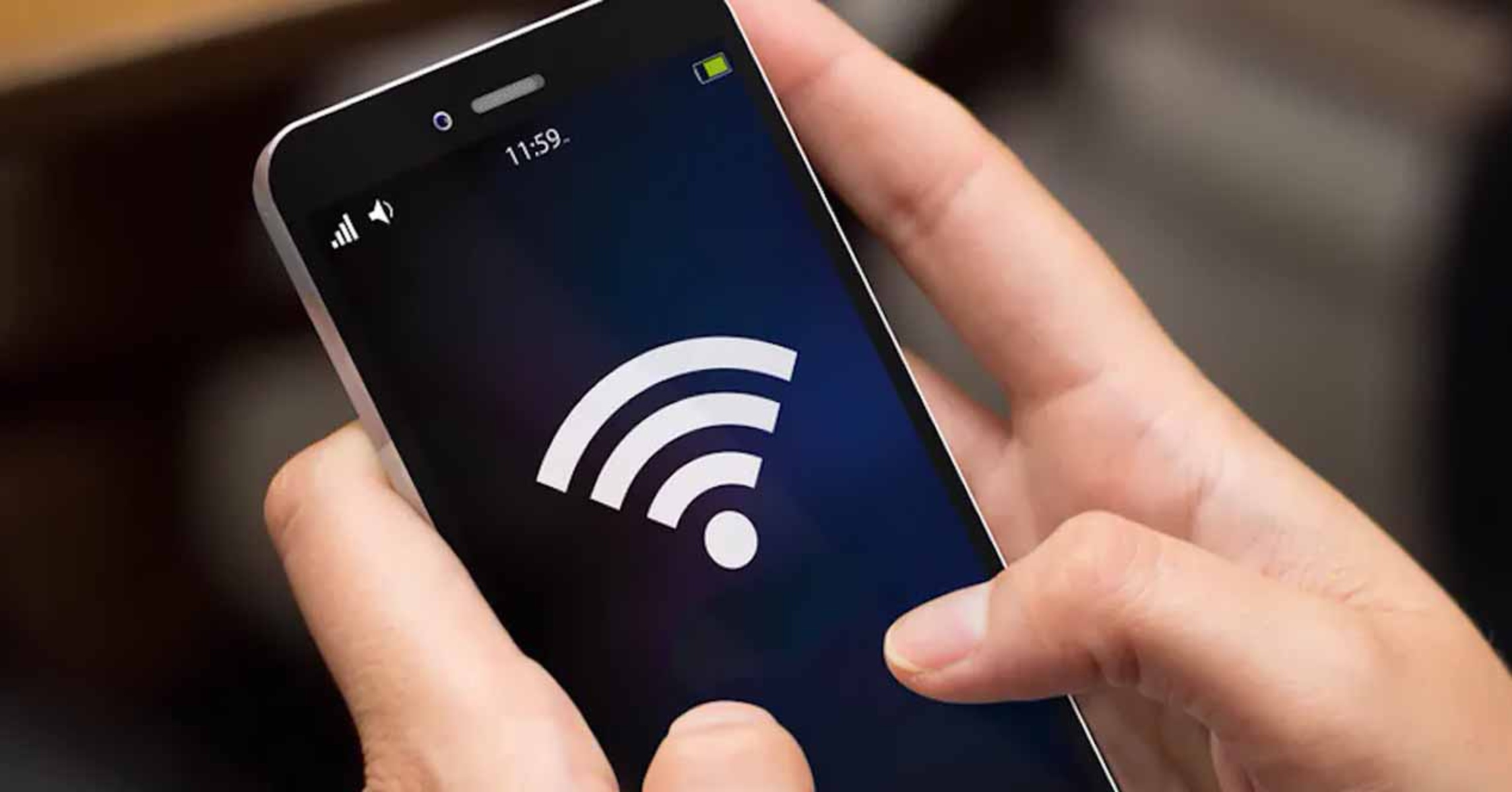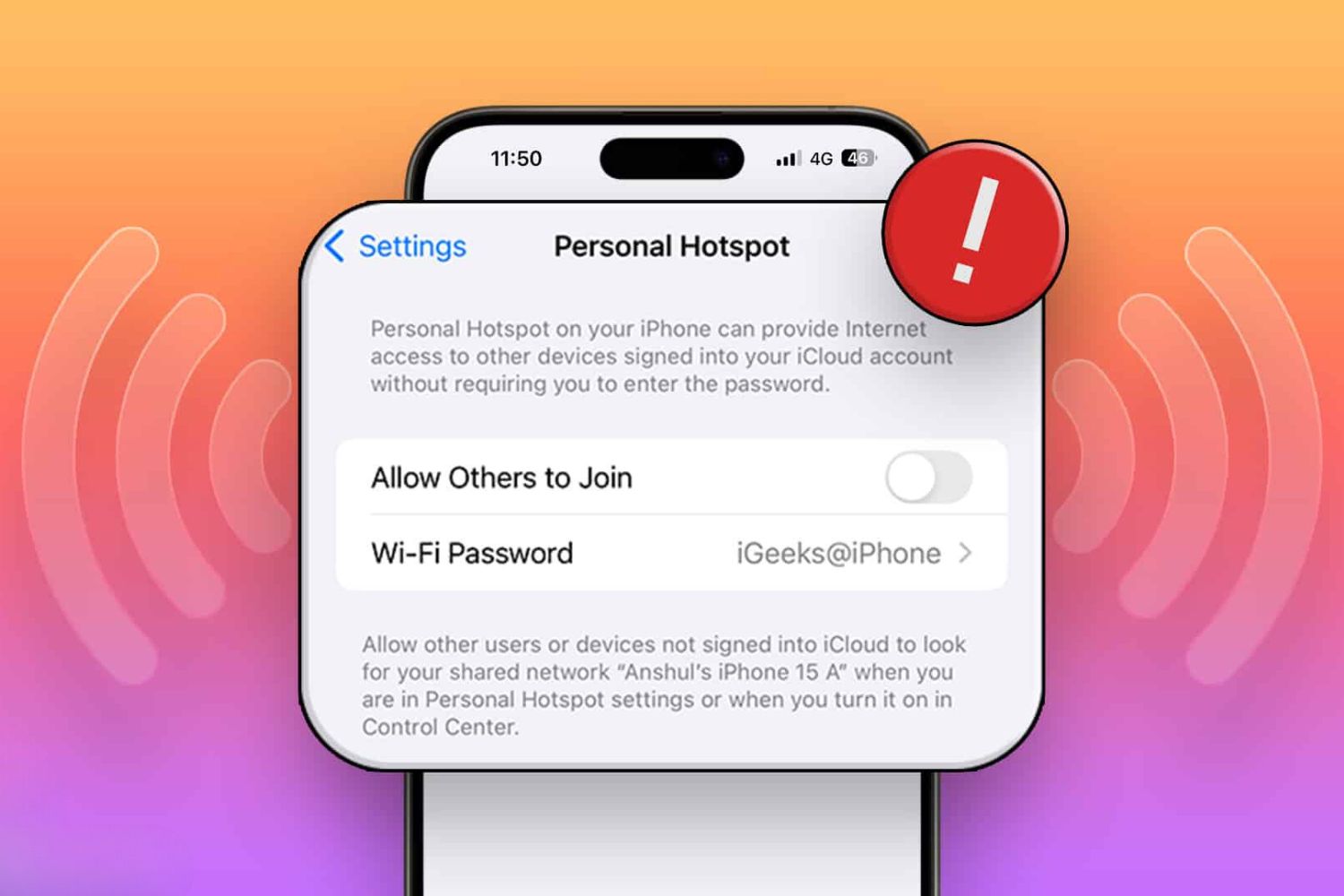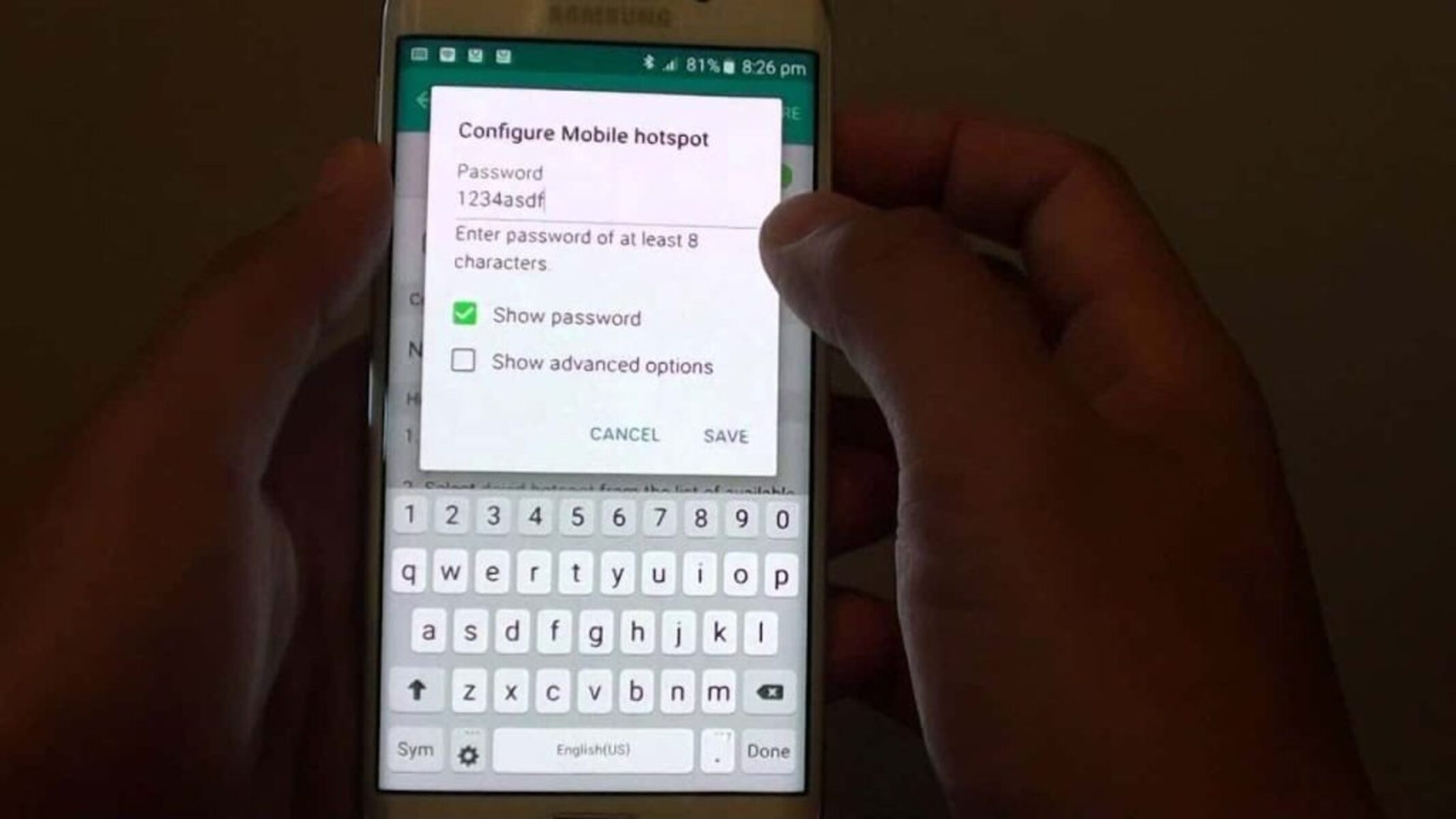What is a Mobile Hotspot?
A mobile hotspot is a portable device or feature on a smartphone that enables other devices to connect to the internet through a cellular network. It serves as a bridge between the connected devices and the internet, allowing them to access the web, send emails, stream videos, and perform various online activities.
When using a mobile hotspot, the device essentially acts as a modem and router, providing a Wi-Fi signal that other devices can connect to. This is particularly useful in situations where traditional Wi-Fi networks are unavailable or unreliable, such as when traveling or in areas with limited internet infrastructure.
The convenience of a mobile hotspot lies in its ability to create a personal Wi-Fi network on the go, allowing multiple devices, such as laptops, tablets, and other smartphones, to connect and access the internet simultaneously. This flexibility makes it a valuable tool for staying connected and productive in various settings, from coffee shops to remote work locations.
In essence, a mobile hotspot offers the freedom to access the internet from virtually anywhere with cellular coverage, making it an indispensable resource for individuals and businesses alike. Whether for work, leisure, or emergency situations, the versatility and accessibility of a mobile hotspot make it a valuable asset in the digital age.
How Does a Mobile Hotspot Work?
A mobile hotspot operates by leveraging a device's cellular connection to create a localized Wi-Fi network that enables other devices to access the internet. This functionality is facilitated through the device's ability to receive data from the cellular network and transmit it as a Wi-Fi signal, effectively serving as a bridge between the connected devices and the internet.
When a mobile hotspot is activated on a smartphone or a dedicated hotspot device, it establishes a Wi-Fi network with a unique name (SSID) and password. Other devices, such as laptops, tablets, or other smartphones, can then detect and connect to this network, allowing them to access the internet using the cellular data connection of the hotspot device.
The process of creating a mobile hotspot involves several key components working in tandem. Firstly, the device hosting the hotspot must have a compatible cellular data connection, typically provided by a mobile network operator. This connection enables the device to access the internet over the cellular network, which forms the foundation for the hotspot's functionality.
Once the cellular data connection is established, the device's hotspot feature utilizes its internal hardware, such as Wi-Fi radio transceivers, to broadcast a Wi-Fi signal. This signal effectively extends the internet connectivity of the cellular data connection to nearby devices, enabling them to browse the web, stream media, and utilize online services.
From a technical standpoint, the mobile hotspot creates a small-scale local area network (LAN) within its vicinity, allowing connected devices to communicate with each other and access the internet through the host device's cellular connection. This process is transparent to the connected devices, which interact with the hotspot as they would with any other Wi-Fi network, providing a seamless and familiar user experience.
In essence, the mobile hotspot serves as a portable gateway to the internet, offering a convenient and flexible means for users to stay connected when traditional Wi-Fi networks are unavailable or impractical. Its ability to extend internet access to multiple devices simultaneously makes it a versatile tool for a wide range of scenarios, from remote work and travel to emergency connectivity in areas with limited infrastructure.
By understanding the underlying mechanics of how a mobile hotspot operates, users can harness its potential to stay connected and productive in a variety of settings, empowering them to leverage the internet's resources wherever their journey takes them.
Setting Up a Mobile Hotspot
Setting up a mobile hotspot is a straightforward process that empowers users to create a personalized Wi-Fi network using their smartphone or dedicated hotspot device. This functionality is particularly valuable in situations where traditional Wi-Fi access points are unavailable, unreliable, or insecure. Whether for remote work, travel, or simply staying connected on the go, the ability to set up a mobile hotspot provides a flexible and convenient solution for accessing the internet from various locations.
To initiate the setup, users typically navigate to the settings menu on their smartphone or hotspot device and locate the "Mobile Hotspot" or "Tethering" option. Upon selecting this feature, they can configure the hotspot settings, including the network name (SSID) and password. This step is crucial for securing the hotspot and preventing unauthorized access, ensuring that only intended users can connect to the network.
Once the hotspot settings are customized, users can activate the hotspot, effectively enabling the device to broadcast a Wi-Fi signal that other devices can detect and connect to. This process establishes a localized Wi-Fi network, allowing nearby devices to access the internet through the cellular data connection of the host device.
After the hotspot is activated, users can connect their other devices, such as laptops, tablets, or additional smartphones, to the newly created Wi-Fi network. This typically involves selecting the hotspot's network name from the list of available Wi-Fi networks and entering the corresponding password. Once connected, the devices can seamlessly utilize the internet access provided by the mobile hotspot, enabling a wide range of online activities from browsing and emailing to streaming media and accessing cloud services.
It is important to note that the specific steps for setting up a mobile hotspot may vary slightly depending on the device and operating system. However, the fundamental process remains consistent, empowering users to establish a personalized Wi-Fi network wherever cellular coverage is available.
By understanding the steps involved in setting up a mobile hotspot, users can harness this functionality to stay connected and productive in diverse environments. Whether for work, leisure, or emergency connectivity, the ability to create a mobile hotspot offers a valuable resource for accessing the internet on the go, enhancing flexibility and connectivity in an increasingly mobile world.
Security Considerations for Using a Mobile Hotspot
When utilizing a mobile hotspot, it is vital to prioritize security to safeguard sensitive data and ensure a safe browsing experience. As the internet traffic is transmitted through the cellular network and the Wi-Fi connection created by the hotspot, several security considerations must be taken into account to mitigate potential risks and protect against unauthorized access.
Encryption and Password Protection
One of the primary security measures for a mobile hotspot is the implementation of encryption and password protection. When setting up the hotspot, it is essential to enable WPA2 or WPA3 encryption, which helps secure the Wi-Fi network and prevent unauthorized interception of data. Additionally, creating a strong and unique password for the hotspot network is crucial to deter unauthorized access. By utilizing a combination of uppercase and lowercase letters, numbers, and special characters, users can enhance the security of their hotspot and minimize the risk of intrusion.
Network Name (SSID) Broadcasting
Disabling the broadcasting of the hotspot's network name, also known as the SSID, can add an extra layer of security. When the SSID broadcasting is turned off, the network name is not openly visible to nearby devices, making it more challenging for unauthorized users to detect and attempt to connect to the hotspot. While this measure alone may not provide foolproof security, it serves as a deterrent and adds complexity to the process of identifying and accessing the hotspot network.
Device Management and Access Control
Managing the devices that are allowed to connect to the mobile hotspot can enhance security and control over network access. Some hotspot configurations offer the ability to specify which devices are permitted to join the network, effectively restricting access to authorized devices only. By maintaining a list of approved devices and preventing unknown devices from connecting, users can mitigate the risk of unauthorized access and maintain greater oversight of their hotspot network.
Public Network Awareness
When using a mobile hotspot in public locations, such as cafes, airports, or hotels, it is crucial to exercise caution and be mindful of potential security threats. Public Wi-Fi networks, including those created by mobile hotspots, can be susceptible to malicious activities, such as eavesdropping and man-in-the-middle attacks. To mitigate these risks, users should refrain from accessing sensitive or confidential information when connected to public hotspots and consider using a virtual private network (VPN) for an added layer of encryption and security.
Regular Software Updates and Security Patches
Ensuring that the device hosting the mobile hotspot is regularly updated with the latest software and security patches is essential for maintaining a secure network environment. By staying current with system updates, users can benefit from enhanced security features, bug fixes, and vulnerability patches that help protect against emerging threats and potential exploits. This proactive approach to device maintenance contributes to the overall security posture of the mobile hotspot setup.
By conscientiously addressing these security considerations, users can establish a more secure and resilient mobile hotspot environment, reducing the likelihood of unauthorized access and potential security breaches. Prioritizing security measures when using a mobile hotspot fosters a safer and more reliable browsing experience, empowering users to leverage the convenience of mobile connectivity while safeguarding their personal and sensitive data.
Tips for Optimizing Mobile Hotspot Performance
-
Positioning and Signal Strength: Optimal placement of the mobile hotspot device can significantly impact its performance. Positioning it in a central location, away from obstructions and interference, can enhance signal propagation and coverage. Additionally, ensuring that the device hosting the hotspot has a strong cellular signal reception can improve the overall connectivity and speed of the network.
-
Limit Connected Devices: While mobile hotspots offer the convenience of connecting multiple devices, the performance can degrade as the number of connected devices increases. To optimize performance, consider limiting the number of connected devices to prioritize speed and stability for essential tasks.
-
Update Device Firmware: Keeping the firmware of the hotspot device up to date is crucial for addressing potential performance issues and security vulnerabilities. Regular firmware updates can introduce improvements to network stability, signal optimization, and overall performance enhancements.
-
Utilize External Antennas: Some hotspot devices support external antenna connections, which can amplify the signal strength and extend coverage. By utilizing compatible external antennas, users can optimize the reach and quality of the cellular signal, leading to improved hotspot performance, especially in areas with weak reception.
-
Monitor Data Usage: Excessive data usage by connected devices can strain the hotspot's resources and impact performance. Monitoring data usage and identifying bandwidth-intensive applications can help in managing and prioritizing network traffic, ensuring a smoother and more efficient browsing experience for all connected devices.
-
Power Saving Mode: Activating the power-saving mode on the hotspot device can prolong battery life and optimize performance by adjusting power consumption. This feature can be particularly beneficial when using the hotspot for extended periods, allowing for sustained connectivity without compromising performance.
-
Network Band Selection: Depending on the capabilities of the hotspot device and the available cellular networks, manually selecting the optimal network band (e.g., 4G LTE, 5G) can enhance performance in areas with multiple network options. This proactive approach can help in maximizing the speed and stability of the mobile hotspot connection.
-
Regular Reboots: Periodically rebooting the hotspot device can clear temporary system glitches, refresh network connections, and optimize performance. This simple maintenance practice can contribute to the overall stability and efficiency of the mobile hotspot, especially after extended usage periods.
By implementing these tips, users can proactively optimize the performance of their mobile hotspots, ensuring reliable connectivity, improved speed, and enhanced overall user experience. These optimization strategies empower individuals and businesses to leverage the full potential of mobile hotspots, enabling seamless and efficient internet access in diverse environments.

























